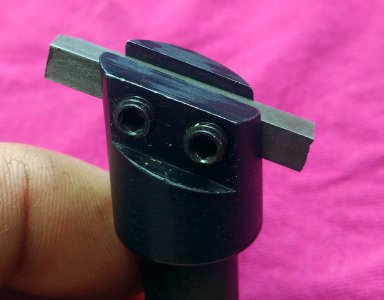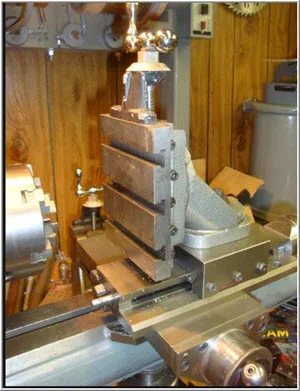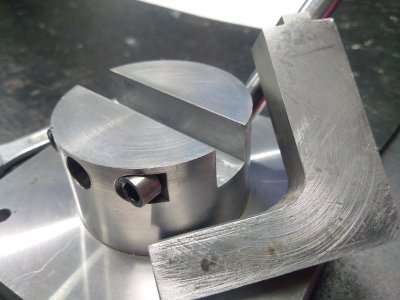DPittman
Ultra Member
Hi,
I am wanting to learn to use a fly cutter on my small Asian 10" lathe. I have attached picture of small 3/16" fly cutter. Shouldn't the bit be flush with top surface of the tool holder? The other two holders I have seem to be flush or at least close to flush. I'm thinking this will cause problems with clearance or I will have to run the bit out with excessive overhang? Should I just shim it out?
If it isn't already obvious, I know zero about the use of a flycutter. I am trying to get into my head how to grind them but will likely be looking for advice on that here also.
DPITTMAN
I am wanting to learn to use a fly cutter on my small Asian 10" lathe. I have attached picture of small 3/16" fly cutter. Shouldn't the bit be flush with top surface of the tool holder? The other two holders I have seem to be flush or at least close to flush. I'm thinking this will cause problems with clearance or I will have to run the bit out with excessive overhang? Should I just shim it out?
If it isn't already obvious, I know zero about the use of a flycutter. I am trying to get into my head how to grind them but will likely be looking for advice on that here also.
DPITTMAN



